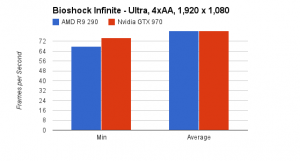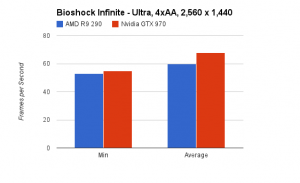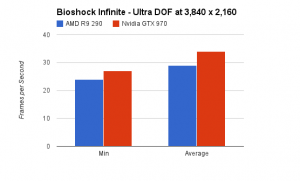Nvidia GeForce GTX 970 v AMD Radeon R9 290
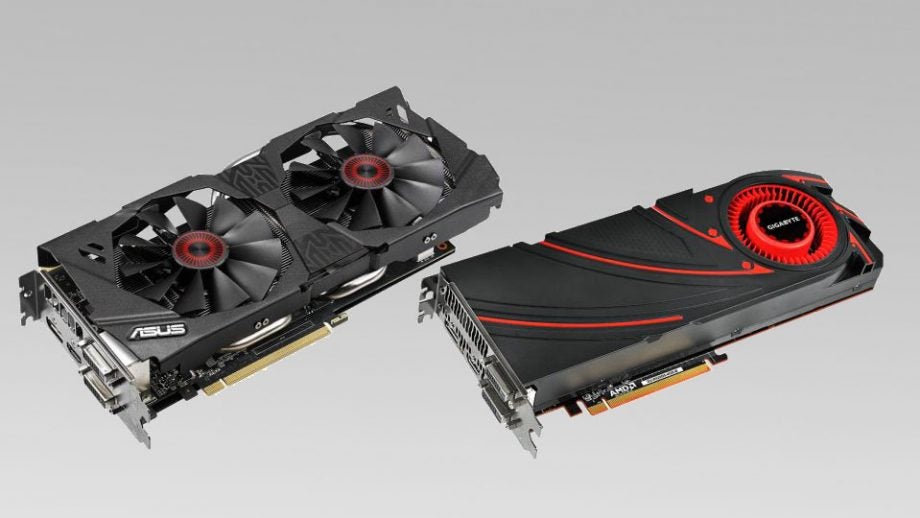
Nvidia GeForce GTX 970 v AMD Radeon R9 290: Battlefield 4 Performance
This popular FPS is a PC favourite and it’s a good yardstick of component performance – it’s demanding, but these cards should be able to handle the Frostbite engine at high resolutions and quality settings.
Neither card struggled at 1,080p, and it was the AMD hardware that took an early lead – its 57fps minimum was a frame better than Nvidia could manage. The GTX 970 overhauled its rival in the average framerate test with a score of 72fps, with the AMD card four frames back.
Nvidia’s GPU took control at 2,560 x 1,440 with minimum and average scores of 36fps and 47fps. AMD’s card hit 35fps and 42fps in the same tests – still playable, but not as quick.
Neither of these cards can comfortably run Battlefield 4 at 4K in our Ultra-quality benchmark, with both averaging 24fps alongside sub-20fps minimums. Our benchmark has 4x anti-aliasing enabled by default, and turning this option off saw results improve. The AMD card was more impressive in this test: its 27fps minimum was three frames better than Nvidia, and its 34fps average was only one frame slower than the GTX 970.
AMD’s card might take a slim victory in the 4K test, but we still wouldn’t be confident using the R9 290 to play Battlefield 4 at this high resolution – its 34fps average is fine, but that 27fps minimum means play won’t be totally smooth.
Elsewhere, the GTX 970 is the clear winner. It opens up significant gaps in average framerate tests run at 1080p and 1440p, and there’s little to choose when looking at minimum framerates.
WINNER: Nvidia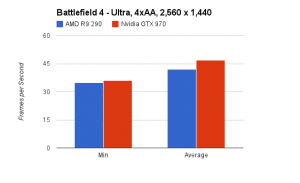
SEE ALSO: Samsung 850 Pro 512GB review

Nvidia GeForce GTX 970 v AMD Radeon R9 290: Bioshock Infinite
This is one of the easier games in our benchmark suite, so it’s no surprise that both cards blitzed the 1080p benchmarks – at this resolution, both GPUs will run the game with no complaints.
The GTX 970 took the crown in the first test with results of 75fps and 98fps – the R9 290 could only reply with minimum and average framerates of 68fps and 85fps.
The gap closed at the higher 2,560 x 1,440 resolution, but Nvidia maintained a big lead. Its minimum result of 55fps was two frames better than AMD, and it topped out at an average of 68fps – eight frames better than its rival.
The GTX 970 scored a 34fps when running Bioshock at 4K, although its 27fps minimum suggests that gameplay won’t be totally smooth. It’s a better bill of health than the R9 290, which scored a 24fps minimum and 29fps average.
There’s only one winner in Bioshock: the GTX 970. Nvidia’s card dominated this test, taking a victory in all six benchmarks.
WINNER: Nvidia
